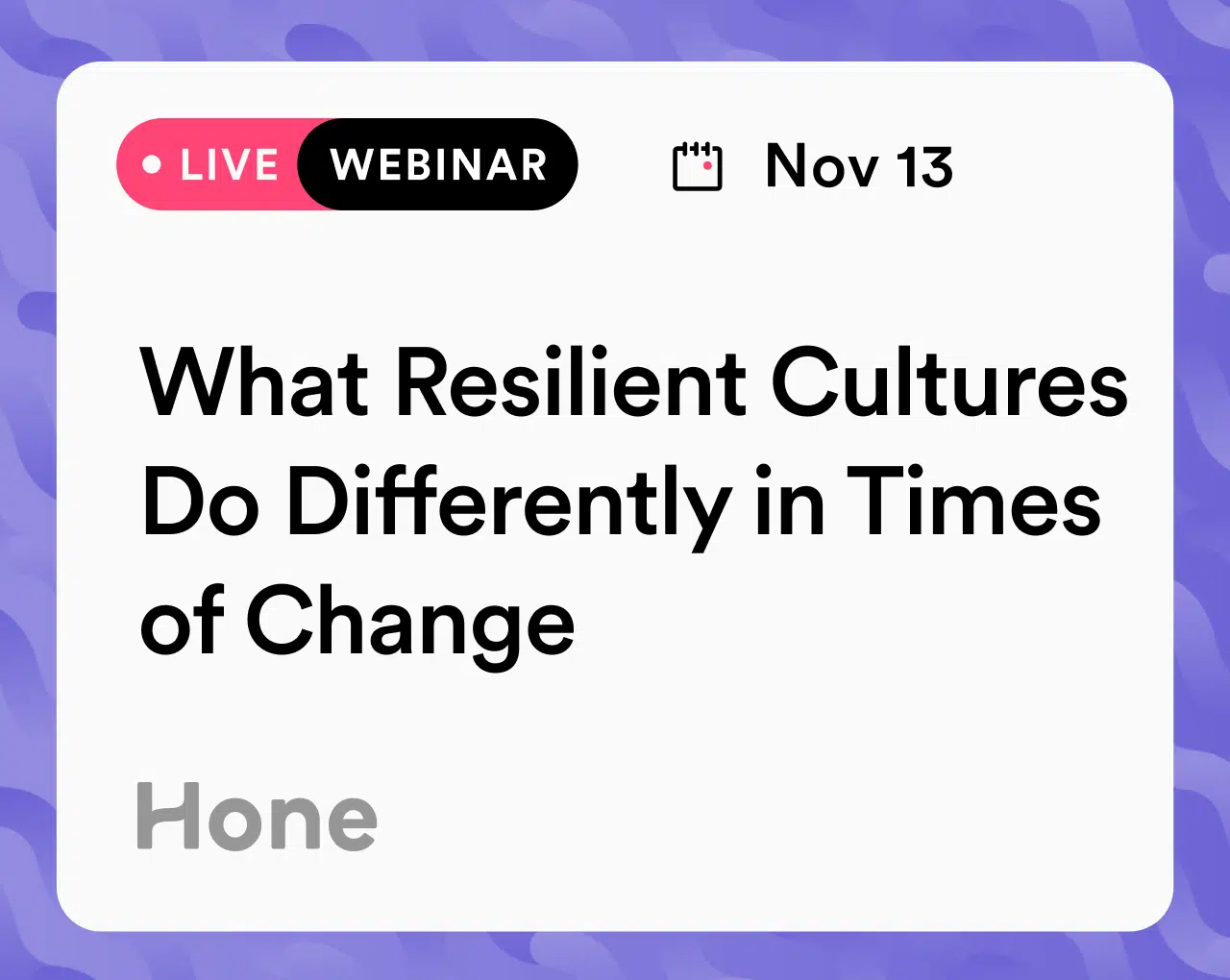What is Organizational Leadership?
The definition of organizational leadership is a management approach in which leaders direct and coordinate employees to achieve the organization’s mission. Organizational leadership includes various responsibilities, such as setting goals and strategies, making decisions, managing resources, building relationships with stakeholders, and creating a positive organizational culture. Leaders also provide a clear direction to their team, delegate tasks, communicate effectively, and evaluate performance.
There’s a difference between traditional management vs. organizational leadership. Organizational leaders’ management style is more holistic and transformative. Organizational leadership involves hard and soft skills, as leaders must deal with business challenges and be good with people. They combine professional understanding with their people skills to lead business initiatives on integrity and ethics.
Is Organization Leadership a Job Title?
At most companies, “Organizational Leadership” is not a job title. Instead, this management approach is found in almost every department, from team lead to chief financial officer. Organizational leaders may be outside of managerial roles. Companies label employees as having “high potential” if they exhibit leadership qualities but do not yet have the experience.
Effective organizational leadership is crucial to create a cohesive team, encouraging innovation, and fostering a positive and productive work environment. They can also inspire their employees to work towards achieving the organization’s mission and vision and to continuously improve their performance and skills.
Why is Organizational Leadership Important to L&D Teams?
Organizational leadership is essential to the learning and development space because they:
- Set direction and vision: Leaders set the direction and vision for the organization, including its goals and objectives for learning and development.
- Create a culture of learning: Leaders who prioritize learning and development create a culture of continuous improvement where employees feel valued and supported in their professional growth.
- Support employee development: Effective leaders provide resources and opportunities for employee development, including training, coaching, and mentorship programs.
- Encourage innovation: Leaders who encourage employees to take risks and embrace change foster a culture of innovation where new ideas and approaches can be tested and refined.
- Drive results: Leaders who invest in learning and development initiatives drive better business outcomes by creating a more capable and engaged workforce.
- Attract and retains talent: Organizations that prioritize learning and development are more likely to attract and retain top talent who seek opportunities for growth and advancement.
Therefore, strong organizational leadership is critical to the success of learning and development initiatives and creating a culture of continuous improvement and growth within the organization.
5 Core Values of Organizational Leadership
The best organizational leaders are visionaries and clear strategic thinkers. They are influential without having to exert authority or power over others. Organizational leaders have a principle to do the right thing for people and the company. Additionally, they give needed direction by setting and communicating specific and measurable performance standards.
Management skills include active listening, decision-making, and delegation. But attributes of values-based leadership can further increase teams’ performance. Organizational leaders instill their practices into others. These managerial skills are often part of their core values. Core values are the guiding principles that define someone’s choices.
Core values are essential because:
- Leaders can avoid or resolve conflict.
- Communication is more straightforward.
- Leaders build trust with their teams.
- Employee engagement and motivation improve.
- Problem-solving mindsets enhance.
- Employees become more goal-oriented.
Other practices, such as hiring and employee retention, are more manageable. Leaders’ values reinforce a company’s culture. Employees want to work for employers and managers that treat them well.
1. Trustworthy
Trust builds strong relationships. Leaders can cultivate trust by focusing on fairness, honesty, and respect. Additionally, they should promote diversity, equity, inclusivity, and a safe environment for employees.
Leaders are committed to setting an example for the rest of the organization. They keep commitments, give others their full attention, and invest in helping others.
2. Ethical
An ethical leader behaves according to social and moral ideologies. Organizational leaders face moral dilemmas frequently, and they choose honesty and truthfulness. Therefore, they build trust and respect with employees, clients, and stakeholders.
3. Strong Communication
Communicating effectively with all parties requires skill and attentiveness. Leaders may need to speak to each employee differently because of their unique perspectives. They focus on the messages’ tone and the individual’s role, values, and beliefs.
4. Aware & Attentive
Organizational leaders recognize strengths, talent, and knowledge. They are creative in utilizing the team’s strengths. They challenge everyone to reach their full potential, even when people do not see it in themselves.
Individuals may need to improve in a strength area from the start. But an organizational leader can provide support and encourage growth. The best leaders develop skills in themselves and others.
5. Open-Minded
Worldviews shape the way people act and interact. Organizational leaders must be aware of their viewpoints. They should understand how these factors affect communication and collaboration. They strive to create an inclusive environment.
4 Organizational Leadership Systems for Modern Teams
An organizational leadership system is a set of practices a leader does regularly to move their mission forward. It permits more time for strategizing and creates greater accuracy and efficiency. Additionally, leaders with a system can stay focused and energetic, respond to change, and bond with their team.
1. Transformational Leadership
A transformational leadership system emphasizes change. Leaders strive to inspire others to achieve more by tapping into their potential. This system can be effective when organizations are looking to make significant changes.
Some critical focuses of transformational leadership include:
- The future – Transformational leaders look ahead and consider what needs to be done to achieve the organization’s goals. They inspire others to do the same.
- Change – Transformational leaders understand that change is necessary for organizational success. Therefore, they work to ensure that others are comfortable and able to adapt.
- People – Transformational leaders see talent in everyone. Therefore, they strive to develop individuals’ strengths and abilities to reach their full potential.
2. Participative Leadership
A participative leadership system involves employees in the decision-making process. This approach often leads to a team’s collective effort to identify problems and develop solutions. Therefore, some refer to it as democratic leadership.
When a leader adopts a participative system, they encourage collaboration through accountability. This approach requires leaders to be inclusive and share power and responsibility. They must also listen to their employees.
This system helps to build trust with employees. It empowers and encourages them to share their ideas, demonstrating their value to a team.
Participative leadership requires good communication skills. So, practicing with remote working or virtual teams can be a challenge. Therefore, leaders must adapt critical ways to keep remote employees engaged.
3. Coaching Leadership
A coaching leadership system focuses on identifying and nurturing each team member’s strengths instead of giving everyone the same orders. It is an effective method for developing employees’ strengths and abilities.
Coaching leadership is similar to democratic oversight. But this approach’s core focus is to increase every employee’s growth and success. In addition, this system enables the team to work together through their strengths.
Leaders form an effective team when they groom employees using this strategy. They do not force emphasis on developing a similar skillset. Instead, leaders can utilize every employee’s unique expertise in different projects.
This system benefits the company and, more so, helps employees improve their strengths. The coaching leadership system’s key traits include the following:
- Leaders can train subordinates effectively.
- Leaders can solve performance-related problems.
- Employees receive guidance and valuable, constructive feedback.
- It improves performance and motivates people.
- It harnesses creativity in new workers.
Coaching leaders are patient because they know that results take time to achieve. They are realists and aware of uncertainty and adversity. But they are prepared to overcome those setbacks to help others.
4. Situational Leadership
The situational leadership method provides a framework based on each situation. It also focuses on the relationship between leaders and others. Situational leaders implement various leadership types and modify their style based on need.
The process starts with a clear understanding of the objective. Additionally, the task provides grounding to align employees’ readiness to perform. That alignment informs the leader of the highest probability of success in selecting a style or an approach.
The following are some of the benefits of situational leadership:
- Accelerates the pace and quality of employee development
- Accounts for multi-directional influence
- Allows leaders to drive behavior change effectively
- Creates a common language of performance
- Teaches leaders to interpret and effectively respond to their environment accurately
- Utilizes tasks specificity as a performance measure versus typecasting employees
Because of its versatility, this type of leadership is effective in most organizations.
Improved Organization Performance Example Scenarios
1. Switching to a New Electronic System With Multigenerational Employees
Holistic Medical is a healthcare business that needs to adopt an electronic medical records (EMR) system. However, not all members of the current health records department feel comfortable switching away from their existing paper-based system. Quinn’s transformational leadership approach sees the change as future-proofing Holistic Medical. Quinn holds a motivational meeting with some high-potential team members less reluctant to the transition. Quinn calls this group the “EMR Trailblazers” and helps them learn the program. Additionally, they teach them how to communicate change effectively to others. The newly trained employees are thrilled they learned a new skill that makes them more valuable and employable. Quinn teams each EMR Trailblazer with another employee so they can share their new knowledge and excitement.
At the end of the month, there’s a bustle in the records department as everyone reveals their tips and tricks. For instance, Jude makes copies of their quick-view command notes for everyone. In addition, employees see Quinn and the EMR Trailblazers as resources for their questions. Quinn establishes bi-monthly classes to review the new program. They also keep an open-door policy for anyone who needs help.
2. Providing Learning and Development Opportunities in a Global Company
SmithCo is a worldwide organization that wants to unify its processes across all its entities. It is a multinational company with nearly 100,000 employees, so the solution needs to be flexible yet customizable. Angel is SmithCo’s Head of Learning and Development (L&D) and needs to find a scalable training program. They have a participative leadership style and ask others in the L&D department for ideas.
After hearing everyone’s suggestions in a team meeting, Angel holds a vote for the best opportunity. Most of the team agrees to a third-party provider that offers cohort classes and self-paced learning modules. Angel, their team, and some managers try the provider’s pilot program. Then, again, the L&D group meets to discuss their experiences to determine if it is still the best path forward. Furthermore, participants – even those who wanted to go in a different direction – were impressed.
3. Managing a Team Project to Improve the Company’s Website Engagement
Taylor is a team leader who needs to coordinate efforts to increase the company’s website engagement. Because Taylor uses a coaching leadership system, they assign tasks based on each team member’s strengths.
- Blake is the team’s newest member and just learned about the company’s search engine optimization (SEO) software. Taylor tasks Blake with finding the best keywords for their marketing efforts.
- Parker has a background in communications and an interest in writing. Taylor tells Parker to update the website’s copy with the newly researched SEO terms.
- Cameron is very friendly and has worked with the company for nearly a decade. Taylor asks Cameron to work with other departments to coordinate incentivized discounts, offers, and contests.
Organization Leadership Takeaways
Improved organizational leadership performance can manifest in various ways, including:
- Improved decision-making: Effective leaders make informed decisions based on data and analysis, leading to better outcomes for the organization.
- Increased employee satisfaction: Leaders who prioritize employee development and engagement create a more positive work environment, leading to increased employee satisfaction and reduced turnover.
- Better communication: Strong leaders are effective communicators who clearly convey their vision and goals to their teams and stakeholders.
- Improved team dynamics: Effective leaders foster a culture of collaboration and teamwork, leading to better team dynamics and improved results.
- Increased innovation: Leaders who encourage risk-taking and embrace change create a culture of innovation, leading to new ideas and approaches that drive business growth.
- Enhanced reputation: Organizations with strong leadership are more likely to be seen as industry leaders, enhancing their reputation and attracting top talent.
These are just a few examples of how improved organizational leadership performance can manifest. Ultimately, organizational leadership drives better outcomes for the organization, its employees, and its stakeholders.













